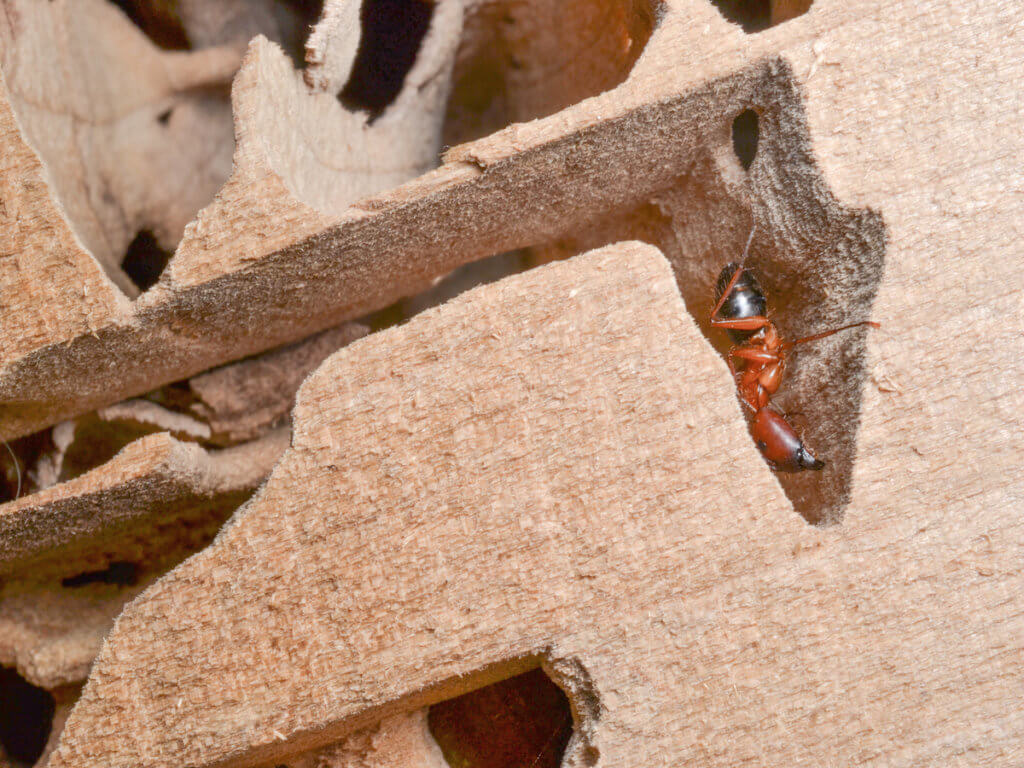
Outdoors, carpenter ants will build their nests in almost any wood source, including tree stumps, firewood, fence posts or landscaping materials. The main colony is typically located outside and contains the queen, eggs and young. Smaller nests can develop and branch out from the main colony; however, they will only contain workers, mature larvae. They need a constant water source to survive. Carpenter ants will enter a house through wet, damaged wood. Once in the home, they can cause some serious damage to the structure of your house.
Almost all species of carpenter ants attack wood that is has been wet and damaged by mold. Although these ants first enter the home through wet, decayed wood, they will then turn to dry, undamaged wood and begin excavating tunnels. They usually enter the home through, plumbing, electrical locations, and through cracks around doors and windows. These wood-destroying ants will crawl along overhead wires, shrubs, or tree limbs in order to reach the house, then enter through any small opening.
Winged males are typically the first to emerge when the weather and temperature is to their liking. These winged males are usually found swarming in early spring. The first appearance of winged males in a home is cause for concern since it indicates these ants have already moved into your house. Carpenter ants can sometimes be heard moving in the walls or other area where there is wood in the home. Although some workers are active during the day, most activity occurs from shortly before dusk until dawn.
Carpenter ants do not eat wood but damage wood through their nest building. They feed primarily on insect honeydew, plant and fruit juices and other insects. When in the home, carpenter ants will look for sweets, eggs, meats, and grease. Worker ants will travel up to 300 feet from their nest looking for food.
Once Carpenter Ants have entered your home, they can pose a significant threat to your property. If you think you may have a carpenter ant infestation, contact NW Pest Control immediately to discuss the proper treatments to remove this pest from your home.
